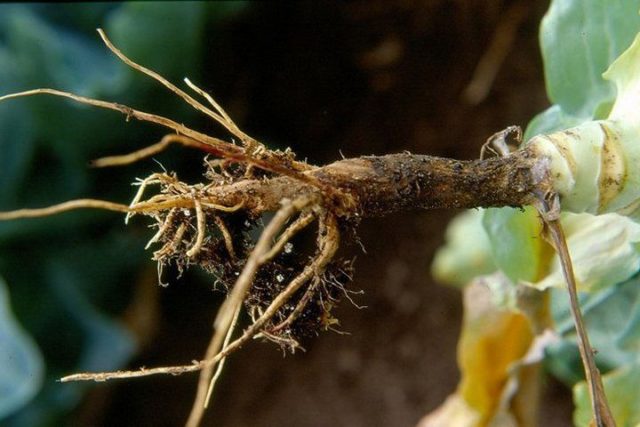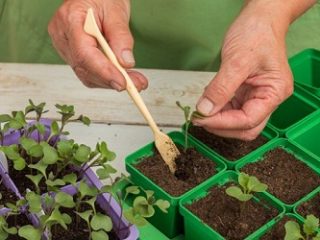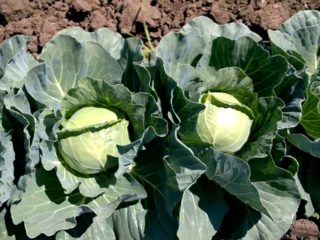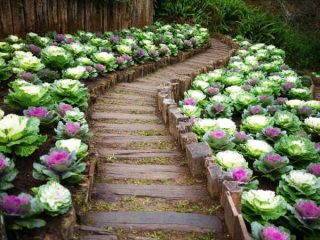Content
One of the most popular crops is cabbage. This vegetable not only has high taste, but also contains a large amount of nutrients. That is why it takes pride of place in the garden beds. White-headed varieties are especially popular with vegetable growers, one of which is Krautman cabbage.
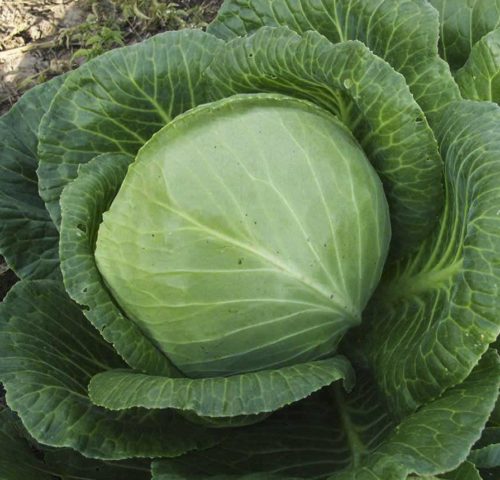
Popular mid-late hybrid Krautman F1 bred by Dutch breeders
Characteristics of krautman cabbage
Krautman cabbage (pictured below) is a white mid-season variety. The period from germination to harvest lasts 4-6 months. The rosette of the plant is compact. Consists of slightly wrinkled, raised, smooth leaves of medium size. The edges are even, smooth, the color is rich emerald, with a waxy coating of medium to strong intensity. The inner leaves are thin, delicate, light in color (lighter than the outer ones). The inner stump is the same length as the outer one. The average weight of cabbages is about 1.8-4.5 kg. Some specimens grow up to 6-7 kg.
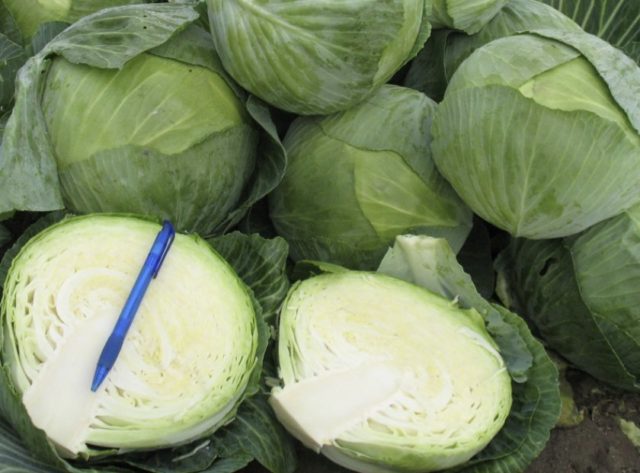
Head of cabbage in Krautman cabbage semi-covered, medium size, round shape, dense structure
Heads of cabbage have an attractive appearance, do not crack under any weather conditions, do not rot. They are stored for a long time after ripening on the vine and are perfectly transported over long distances without loss of taste. Also, the hybrid adapts well to any weather conditions.
Advantages and disadvantages
Benefits of the Krautman hybrid:
- high productivity;
- friendly return of the harvest;
- heads of cabbage do not rot or crack;
- excellent presentation;
- heads of cabbage can remain in the beds for a long time after full maturation;
- good transportability over long distances;
- excellent keeping quality;
- immunity to fungal diseases;
- easily adapts to a variety of weather conditions.
Disadvantages of the variety:
- weak root system, which leads to the plant falling on its side, under the weight of ripening heads of cabbage;
- lack of resistance to keel.
Cabbage yield Krautman F1
White cabbage Krautman has a high yield - 400-900 c / ha. From 1 m2, you can collect about 8.0-9.5 kg. The crop is quite good keeping quality. Ripe heads of cabbage can be stored until early spring.

Heads ripen almost simultaneously
Planting and caring for Krautman cabbage
For planting Krautman cabbage, it is necessary to choose areas with loose, fertile loamy soil. They should also be well lit. You can grow a hybrid by seedling and by direct sowing into the ground. The planting method depends on the weather conditions of the region of cultivation of the vegetable plant.
Planting seeds directly into open ground can be carried out in warm climatic regions. In this case, it is necessary to wait until the soil is completely warmed up to 14-15 ° C. At the same time, the air temperature should not drop below 16-18 ° C at night.
In regions with cold climates, the cultivation of Krautman cabbage is recommended to be carried out in seedlings. At the same time, previously grown and strengthened seedlings are planted in closed or open ground. Roughly, the seedling is ready for transplanting at the age of 35-45 days.
Sowing seeds is recommended in early April. You can use wooden boxes for planting, which must be filled with soil.Seeds are sown into specially prepared grooves, to a depth of 1 cm. The recommended distance between seeds is at least 3 cm. The grooves are covered with earth from above, tamped and watered. The crops are covered with foil and placed in a warm, bright place. After emergence, the film is removed. In the phase of 2 true leaves, a pick can be made. Before planting in open ground, the seedlings must be hardened.
It is recommended to plant seedlings at the end of May. The layout of the seedlings is 50 x 50 cm.
Planting Krautman cabbage seedlings step by step:
- Water is poured into previously prepared wells.
- Roots are placed in them.
- Sprinkle with soil until the first pair of leaves.
- Tamp the soil around the seedling.
- A little watered on top.
In the first few days, it is recommended to shade the seedlings, thereby protecting them from direct sunlight, which negatively affects survival.
It is necessary to care for the Krautman hybrid traditionally, as well as for other varieties of cabbage. Recommended care procedures include:
- watering;
- loosening;
- hilling;
- top dressing.
The first watering is recommended to be carried out with a solution of potassium permanganate (slightly pink). In the future, cabbage is watered once a week. Water consumption - 12 liters per 1 m2. Watering is especially important for plants in the first period after planting, during an active set of green mass and a quick set of heads.
The first feeding should be done 21 days after transplanting the seedlings. Mullein solution can be used as fertilizer. It is recommended to repeat the procedure after 14 days.
It is necessary to feed cabbage in the second stage of the growing season, adhering to the following rules:
- The amount of potash and phosphorus fertilizers applied to the soil is doubled.
- Feeding with nitrogen is carried out twice less often.
Weeding, loosening and hilling are important maintenance activities. These procedures contribute to the formation of a powerful root system and increase yields.
Diseases and pests
The Krautman variety has a high resistance to the occurrence of fungal diseases. Weak plant immunity to diseases such as:
- Blackleg... You can prevent the multiplication of the disease by pulling out the infected seedlings and removing them. The soil is treated with a solution of Bordeaux mixture (1%) and copper sulfate (5 g per 10 l of water).
It manifests itself in the form of areas of black color on plants, over time they die
- Keela... Yellowing and wilting of plants are characteristic signs. The affected foliage must be removed, and the soil must be sprinkled with lime.
As a prophylactic against keela, seedlings can be treated with wood ash
Pests that threaten Krautman cabbage include:
- cabbage fly;
- cruciferous flea;
- cabbage white.
Application
The Krautman hybrid is suitable for fresh consumption, preparation of salads and other dishes. It can also be used in salted and pickled form. The variety has high taste and many useful properties. The leaves of the hybrid are juicy, crispy, sweet, contain a large amount of vitamin C and A. A ripe head of cabbage contains 7.3% of dry matter and 4% of sugars, therefore it is excellent for fermentation. 100 g of cabbage leaves contain about 46 mg of ascorbic acid.
Conclusion
Krautman cabbage has excellent taste and excellent presentation. In terms of productive indicators, it is considered one of the best in the group of mid-season Dutch breeding hybrids. It can be grown both on personal household plots, and on an industrial scale, for commercial production. Growing this white cabbage will be economically viable as the variety has good yields.
